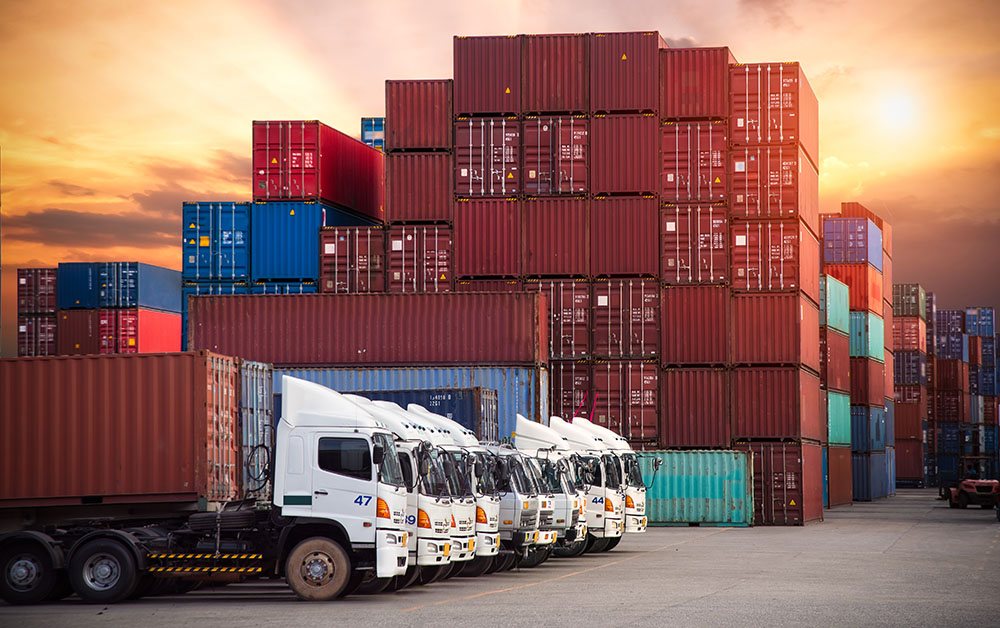Beginning with the COVID-induced economic lockdown last year, supply chain managers around the world have scrambled to get sufficient raw materials and component parts in place to meet strong demand for products. But, like the virus itself, global supply chain operations have been unpredictable at the worst possible time during this economic recovery cycle.
Port Closures
The COVID-19 Delta variant has hit certain populations hard enough that many countries around the world are reacting to it in extreme ways. For instance, China has a zero-case policy. A single case can force the shutdown of the entire business for up to two weeks. In June, the Port of Yantian had a key container terminal shut down for nearly two weeks, backing up ships and creating global supply chain shockwaves as hundreds of ships sat at anchor for weeks. Shortly after Yantian reopened, the Port of Ningbo, the busiest in the world in terms of cargo tonnage, was hit by a lockdown. In early September, there were nearly 140 ships at anchor off the coast of Shanghai and Ningbo. The ports have temporarily reopened but are only a single case of COVID away from another potential shutdown.
Transportation Capacity
As product flows slowed down along the supply chain, transportation capacity across all major modes of freight transportation (rail, truck, maritime, air cargo) experienced record capacity shortages in August. DAT trendlines reported that the US truckload sector had 21.6% more loads than available trucks which is a substantial increase versus a year ago in August. Spot rates for truckload capacity were 24% higher than a year ago and fuel surcharges were 37.9% higher. This was all before Hurricane Ida added to congestion along Louisiana gulf ports.
For those trying to ship via less-than-truckload, rates are just as high. The Producer Price Index shows that rates were 3.8% higher month-over-month resulting in a 48% year-over-year annual rate of increase. Comparing July of 2021 to July of 2020, rates are 11% higher and are still expected to rise through the end of the year.
Intermodal volumes for major US railroads are running nearly 13% ahead of volumes last year. Congestion at the nation’s ports is bad enough that some rail carriers have limited the amount of capacity a specific shipper can utilize at one time.
Looking Forward
Companies need to consider a few items as they look to the end of 2021 and plan for what could potentially happen throughout 2022.
- Budget Considerations: Estimating supply chain transportation and product inflation costs will be difficult. Transportation costs are expected to remain high throughout 2022 as the global supply chain attempts to normalize. Freight costs and fuel surcharges should be top considerations when budgeting.
- Cost Estimating: Volatility in raw materials costs and shipping delays have made it difficult to keep accurate estimates in place, maintain customer satisfaction, and keep projects flowing. Even if there is no easy way to prevent shortages or delays, continued focus on cost estimations is critical.
- Advanced Planning: Many supply chain managers are keeping regular tabs on their suppliers to understand where potential disruptions and bottlenecks could occur. For instance, knowing where a supplier’s products are sourced can help with understanding potential supply chain risk. Companies should remain vigilant on supplier’s expectations for delivery and identify potential workarounds.
- Working with Carriers: Transportation carriers are going to continue to face capacity constraints over the next year. There are several things that companies can do to help improve access to carrier availability and manage product flows.
- Keep tight appointments for pickups and deliveries. Carriers are tracking detention time when they are on-site for a pickup or delivery. Some are scoring customers and will allocate capacity more readily for those companies that have quick turnaround times.
- Digital booking of shipments. Many freight carriers prefer working with shippers that use digital booking of freight and provide a day or more of advanced warning when they need a pickup.
- Digital tracking and tracing. Customer service teams are expensive resources for carriers. When shippers call to talk to a live person instead of going online and getting a digital update on their shipments, it carries additional cost. Some carriers track this information, and it can affect a shipper’s rates or capacity allocations.
- Consider using third party brokerages. Third-party logistics firms are not the best fit for everybody, but some shippers find it much easier to contact a single party and let them handle everything from finding a carrier at a reasonable rate, to billing and invoicing, tracking and tracing, claims filing, and everything in between.
With COVID interruptions to the global supply chain not seeming to slow any time soon, analysts believe that it may still take until the end of 2022 to get the global distribution system back to normal. These delays mean a higher operating cost environment for some time to come and critical decisions need to be made to ensure that companies can retain profitability. The professionals at MarksNelson are closely monitoring the supply chain situation along with the latest issues facing the manufacturing and distribution industries. Contact us today to see how we can help your company move forward in today’s complicated environment.

